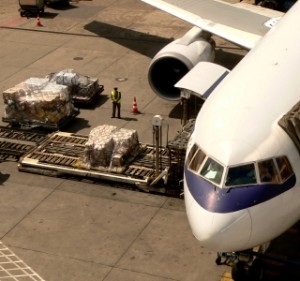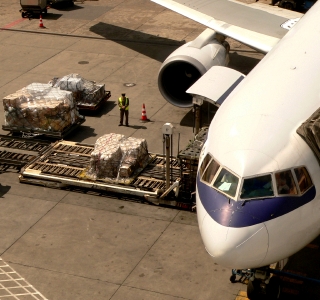 CARGO throughput at the Philippines’ main gateway, the Ninoy Aquino International Airport, declined 6.5% to 326.044 million kilograms in the first nine months of the year, from 348.704 million kg in the same period in 2012, data from the Manila International Airport Authority showed.
CARGO throughput at the Philippines’ main gateway, the Ninoy Aquino International Airport, declined 6.5% to 326.044 million kilograms in the first nine months of the year, from 348.704 million kg in the same period in 2012, data from the Manila International Airport Authority showed.
The decline reflects a continuing air cargo industry slump that has taken its toll on airline earnings and market share since the 2008 global economic downturn.
Cargo volume for the third quarter alone slipped 4.27% to 107.219 million kg from 111.996 million kg in the same period last year.
International air freight volume for July-September, which accounted for 65.26% of the total, fell 6.78% to 69.968 million kg from last year’s figure of 75.056 million kg.
Domestic cargo volume was slightly upbeat for the third quarter, increasing 0.84% year-on-year to 37.252 million kg from 36.940 million kg.
The Manila hub carried 9.11% less international cargoes at 216.225 million kg for the first nine months compared with 237.903 million kg for the same period in 2012.
Of the total international cargo throughput, incoming cargoes decreased 8.23% to 104.273 million kg from 113.623 million kg year-on-year.
Outgoing international cargoes also fell 9.92% to 111.952 million kg from 124.28 million kg.
Domestic cargo throughput for the first three quarters eased 0.89% to 109.818 million kg from 110.801 million kg in the same period earlier.
There was also a 4.05% decrease in incoming domestic cargoes that contributed only 50.992 million kg in the first nine months compared with the 53.145 million kg in the same period a year ago.
Outbound domestic cargoes totaled 58.826 million kg, up 1.99% from last year’s 57.656 million kg.
The International Air Transport Association said in a recent freight forwarders’ conference in Singapore that a prolonged industry slump had shrunk yields, revenues and market share. Since 2010, world trade has grown 12%, but air cargo demand growth has been basically flat with a mere 2% rise.
“Air cargo is being buffeted by forces for change,” IATA president Tony Tyler said.
“These include changes in the economics of just-in-time manufacturing, longer delivery lead times, innovation by alternative modes of transport, and environmental pressures,” he added.
Cargo revenue for 2013 is expected to reach US$59 billion, some $8 billion below the 2011 peak.
NAIA hosts 45 airlines and air freight operators and is home to local carriers Philippine Airlines, Cebu Pacific, Air Philippines and Zest Airways.
International carriers using NAIA are AirAsia X, Air Niugini, KLM Royal Dutch Airlines, FedEx Express, All Nippon Airways, Korean Airlines, United Parcel ervice, Royal Brunei Airlines, Eva Airways, China Airlines, China Southern Airlines, Emirates, Etihad Airways, Gulf Air, Japan Airlines, Lufthansa Airlines, Delta Air Lines, Air Macau, Singapore Airlines, Thai Airways International, Qantas Airways, Jetstar Asia Airways, British Airways, Tiger Airways, Saudi Airlines, Cathay Pacific, Donghai Airlines, Jetstar Airways, Air China, Jeju Air, Qatar Airways, Dragonair, United Airlines, Kuwait Airways, Malaysia Airlines, Asiana Airlines, Air Hong Kong, Hong Kong Express Airways, Hawaiian Airlines, Yangtze River Express, and Atlas Air.





